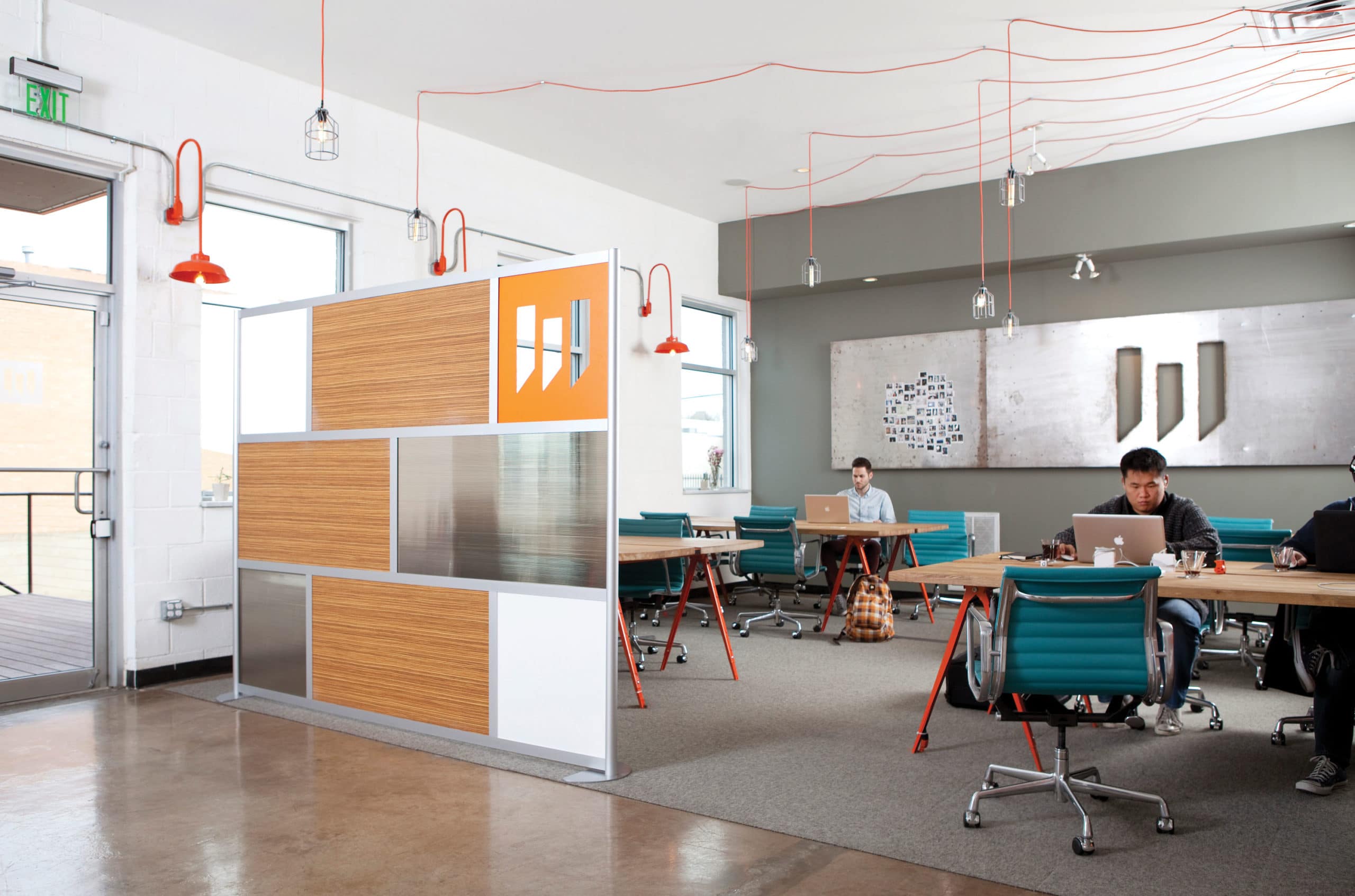How one company’s flexible, creative, and non-corporate–looking room dividers are bringing focus back to the workplace.
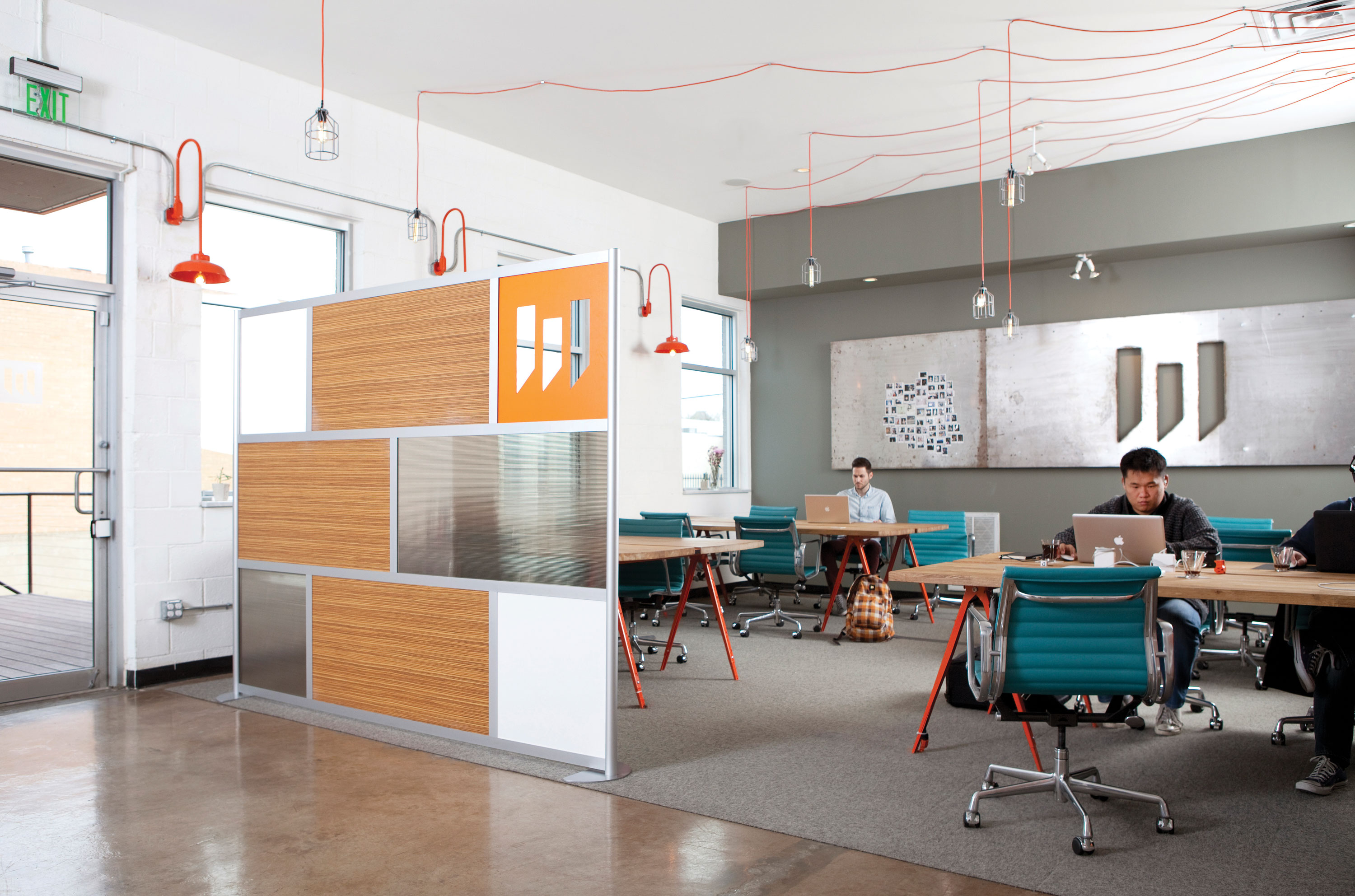
[Photo: Justin Clemons]
 Download a PDF of this story.
Download a PDF of this story.
To learn more, visit LOFTwall.
Several years ago, a spate of articles in publications like The New Yorker and The Atlantic began to shoot down the almighty “open office”—the trend of wall-less desk-lands that had come to characterize around 70% of U.S. workplaces.
The research showed that the side effects of open office design—increased background noise, ease of interruption, lack of both physical and “psychological” privacy, and so on—were undermining the very ideals of collaboration and productivity the model symbolized. The concept seemed to be broken.
Yet in the years leading up to this shift, one entrepreneur had fortuitously (and somewhat unknowingly) been working on a fix. Designer Steve Kinder, who had studied industrial design at RISD (Rhode Island School of Design) and worked in roles that melded product, furniture, and interior design, was running his own event company in Dallas, helping businesses create displays for trade shows and retail spaces. And the partitions and walls he was designing out of modular aluminum frames were getting attention. People wanted to know where they could get similar setups for their offices and homes.
A new business was born.
The initial room dividers Kinder launched through his new company LOFTwall, started in Dallas in 2008, were intended for residential and loft-like spaces. While the concept received warm feedback from the design community, it wasn’t until a couple years later when the company tapped into the office furniture industry and the rising need for open-office remedies that LOFTwall found its sweet spot in the market.
FROM OUR JULY+AUGUST 2017 ISSUE
The preferred publication of leading green professionals.
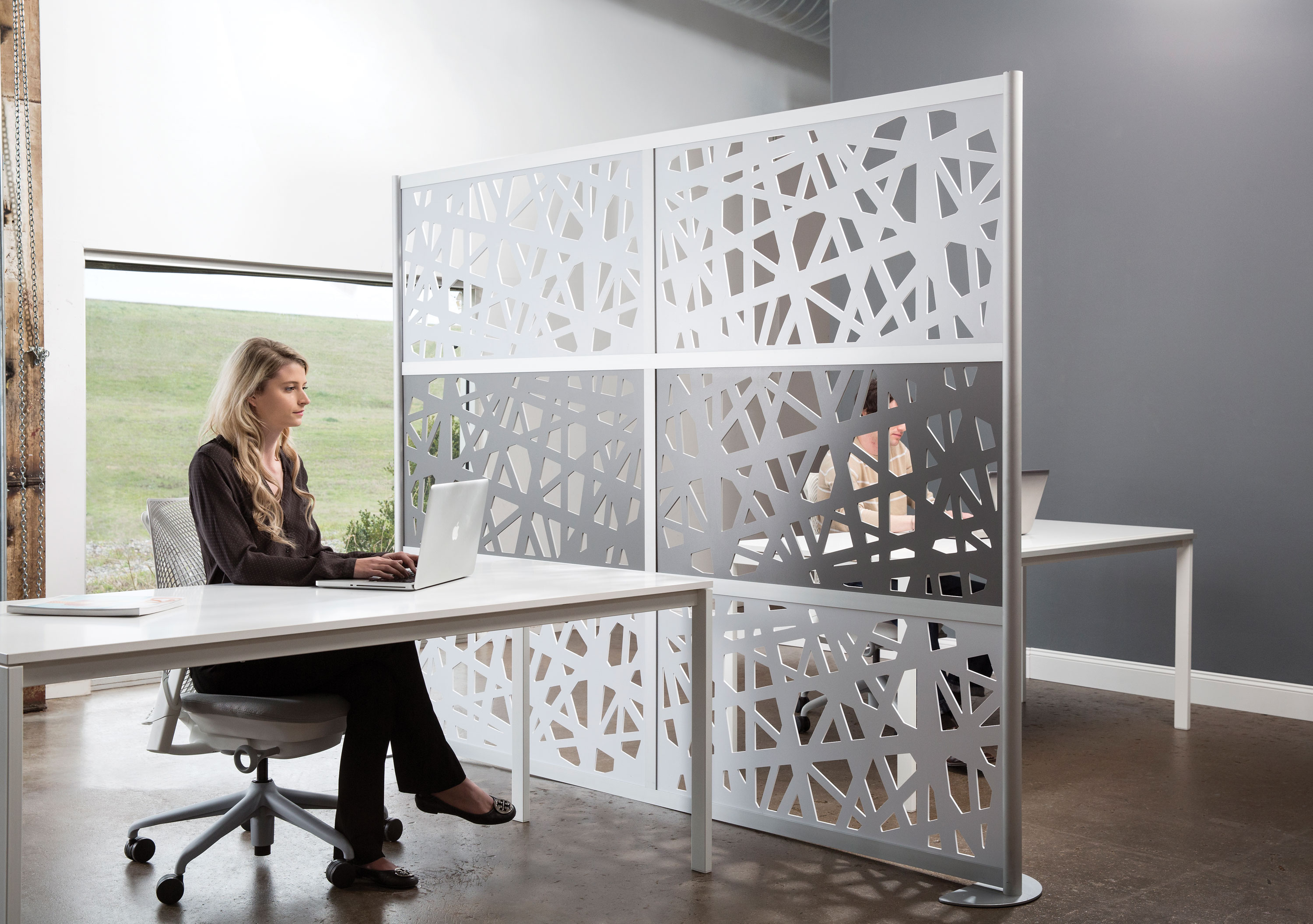
{Photo: Courtesy of LOFTwall]
“People still need delineation of space and a sense of perceived privacy. They want visual barriers to divide their spaces without having to build walls.”
Steve Kinder, LOFTwall
Privacy Makes a Comeback
“Around 2012–2013, the whole open office shift really started to take place and more designers and companies started looking for partitions,” Kinder says. LOFTwall’s freestanding room dividers emerged as a tool for these companies to optimize their open offices without having to resort to the fixed, compartmentalized architecture of the past. In other words: No construction required. “People still need delineation of space and a sense of perceived privacy. They want visual barriers to divide their spaces without having to build walls.”
The company’s products, appearing at companies like Slack, Tesla, and Apple as well as in education and health care settings, are modular, which means they’re easy to install, reconfigure, and add onto as needs evolve. Companies can choose designs by size, color, material, and frame style.
LOFTwall’s core design, FRAMEwall, for example, allows companies to choose panels from around 30 finishes (solid colors, translucent panels, laminate wood textures, and even magnetic and dry-erase surfaces) that all fit into frames made out of 70% recycled aluminum. (These frames can be recycled at the end of their lives, too.) Other designs include FLOX, which is made of renewable wool and designed to absorb noise; WAVEwall, which brings the visual punch of ribbon-like panels to a space; and DESKdivider, which mounts to desk- and tabletops, offering low-height separation that balances privacy with openness.
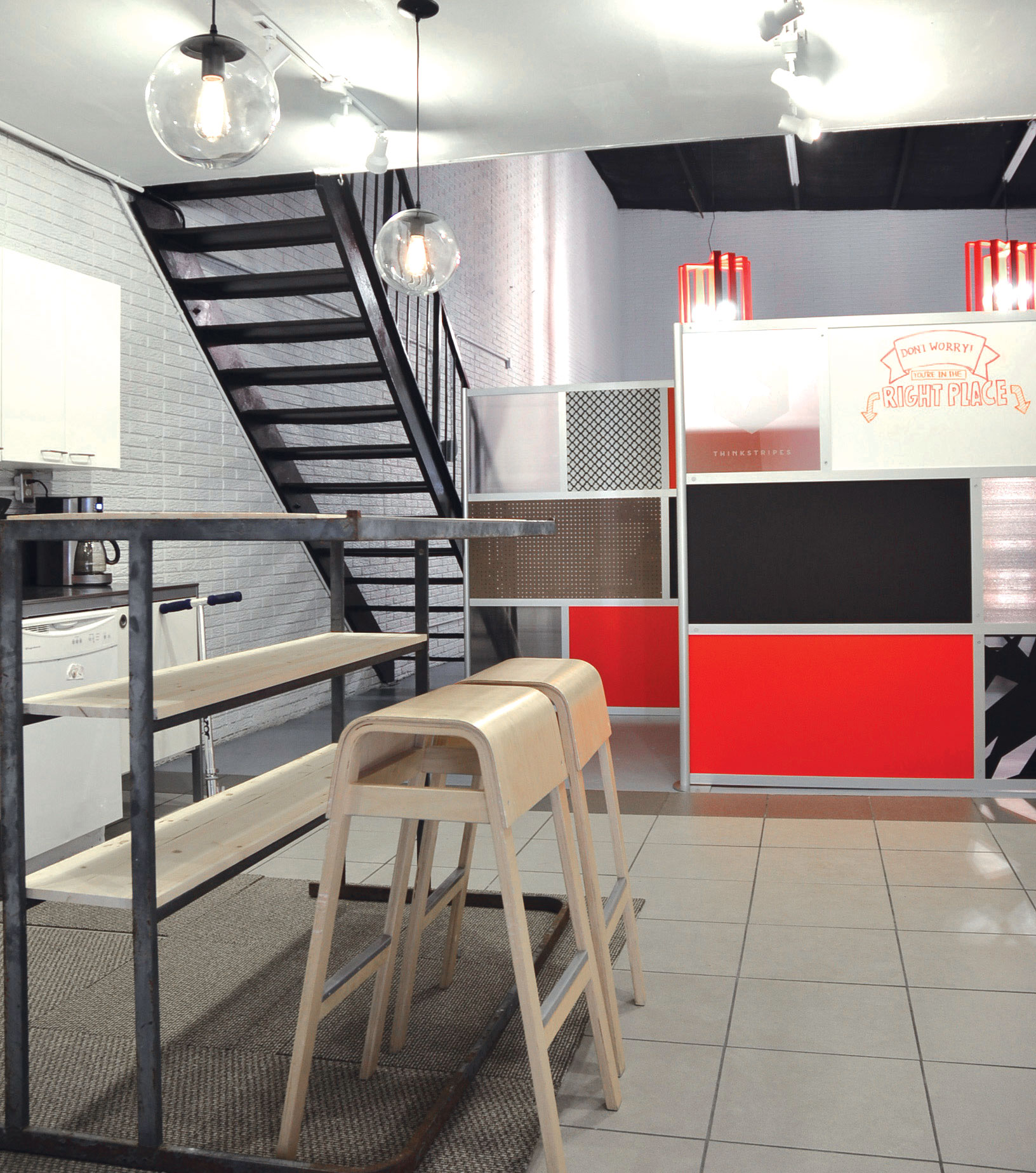
{Photo: Courtesy of LOFTwall]
Reimagining Corporate Design
Across its product line, the company takes a design-forward approach through the use of bold colors, minimalist detailing, and unique finishes—avoiding the gray sameness that characterizes so much of what we’ve come to think of as office furniture. LOFTwall also works with organizations to create custom designs that fit project sustainability requirements (such as LEED) or to manufacture styles that fit their brand, such as the system they made for performance menswear brand Mizzen+Main.
CASE STUDY: Mizzen+Main
During its first several years of operation, performance menswear startup Mizzen+Main worked out of a variety of unconventional spaces before finally claiming its own office. In designing the space, founder and CEO Kevin Lavelle wanted it to be beautiful, functional, and flexible, knowing the company would continue to grow. “Since we couldn’t have 25 offices, we were wondering, how do we do that in an open office environment?” he says.
Lavelle worked with LOFTwall to design a series of custom dividers that fit his brand’s fresh vibe and diverse team. Here’s how that looks:
+ One-of-a-kind partitions made out of the company’s own technical fabrics
+ Additional dividers made out of brass and wood that suit the brand’s style
+ Acoustic panels that help curb noise in high phone use areas
+ Meeting-friendly whiteboard surfaces built into certain partitions
+ Delineation of both private and collaborative work areas
+ The ability to reconfigure (or add onto) the layout as the company evolves
+ An overall vibe that pairs privacy with startup-style collaboration
Mizzen+Main founder and CEO Kevin Lavelle says, “I didn’t want anyone to walk in [our workspace] and say, ‘They bought standard office furniture.’ Our brand is young, fresh, and unique, but it also has a timeless feel to it.” To fit that vibe, LOFTwall helped the company create dividers that feature elements like wood panels and even partitions wrapped in the company’s signature technical fabric. Other panels are sound-dampening to help minimize distraction in certain parts of the workspace.
“We have one long section of our office for people who definitely need a little space and division,” Lavelle explains, referring to customer service and sales teams who spend much of their workdays on the phone. “And then we have an open, bullpen-style area for people who are super collaborative and working together all the time. [The dividers] give a bit of separation and make it feel like it’s not a giant space.” The company had designed the panels for a previous office they eventually outgrew, and when they moved into their more spacious spot, they simply reconfigured the LOFTwall system and ordered additional pieces to create a new conference room.
Lavelle appreciates this ability to adapt the layout as the company grows, adding that the new arrangement has “meaningfully diminished” requests to work remotely. “People feel like they can be more focused,” he says.
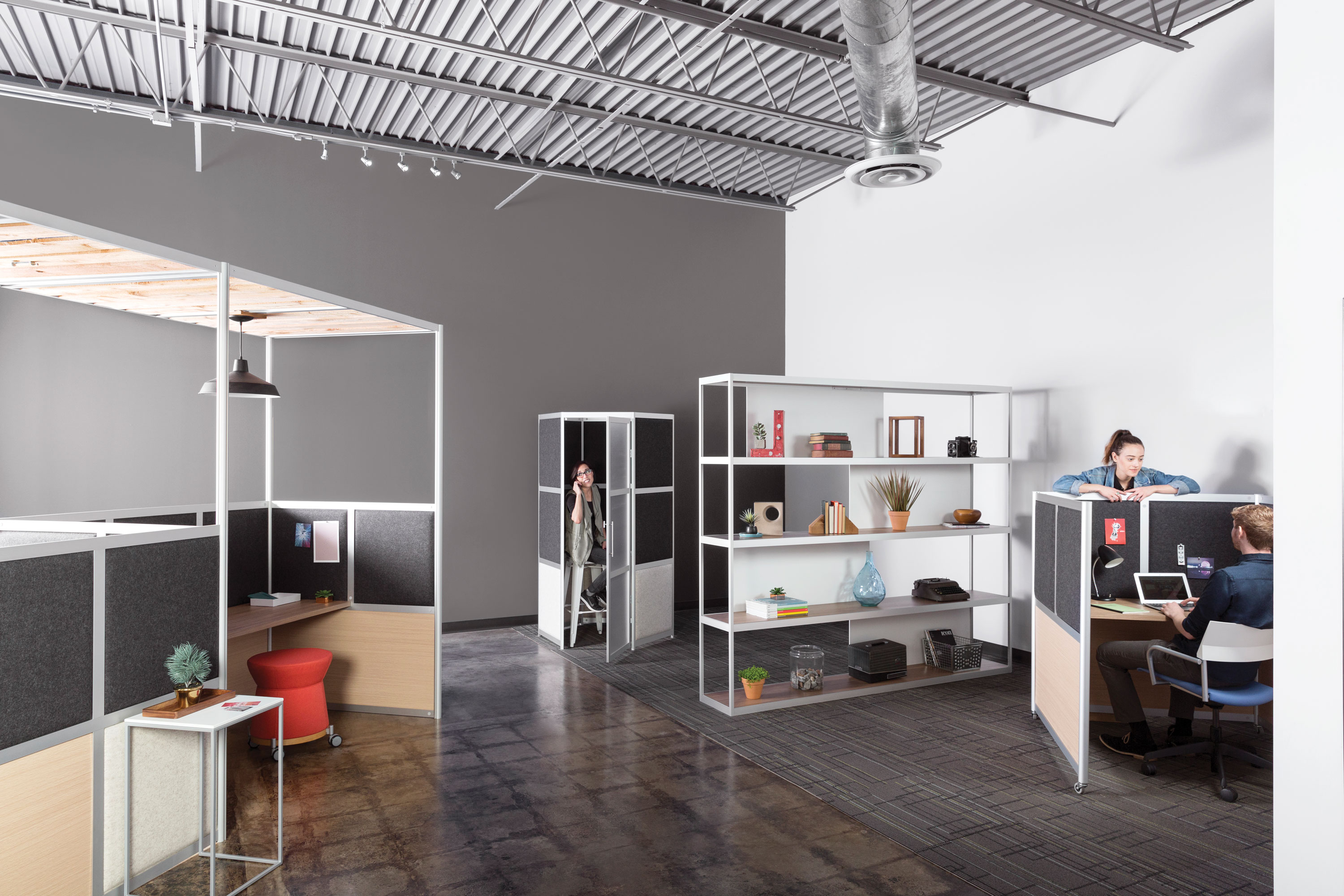
{Photo: Courtesy of LOFTwall]
Making Space for Quiet and Collaboration
This is exactly LOFTwall’s aim, and in helping clients like Mizzen+Main and others structure their workspaces, Kinder helps teams designate four types of spaces, all of which work together to balance individual concentration with productive teamwork.
The first category, which Kinder calls individual focus space, is the area where employees do most of their critical work. “You want to divide the space or have low-height barriers to minimize distraction,” he says. The second type of space, an intimate dialogue space, is a small private area for team members to have one-on-one conversations or participate in webinars without distracting colleagues. The third type of space is a group meeting area, such as a conference room. And the fourth type, which Kinder calls a zone, could look like a cluster of lounge seats or a break area with a ping-pong table—an informal space that allows people to be spontaneously creative or take a breather.
By allocating these spaces, companies affirm different personalities and facilitate the different ways people work. “It’s not a cookie-cutter office environment anymore,” Kinder says, explaining that, far from the model of the late 20th century in which cubicle-driven layouts forced everyone to work the same way, today’s workplace is about employee empowerment and autonomy. Individuals are entrusted to find their own best way to meet expectations. Accordingly, Kinder hopes LOFTwall’s designs can help companies create more “agile” employee-oriented workspaces: neither too compartmentalized nor loose, providing the right mix of spaces for a company’s makeup.
Learn more about LOFTwall here.
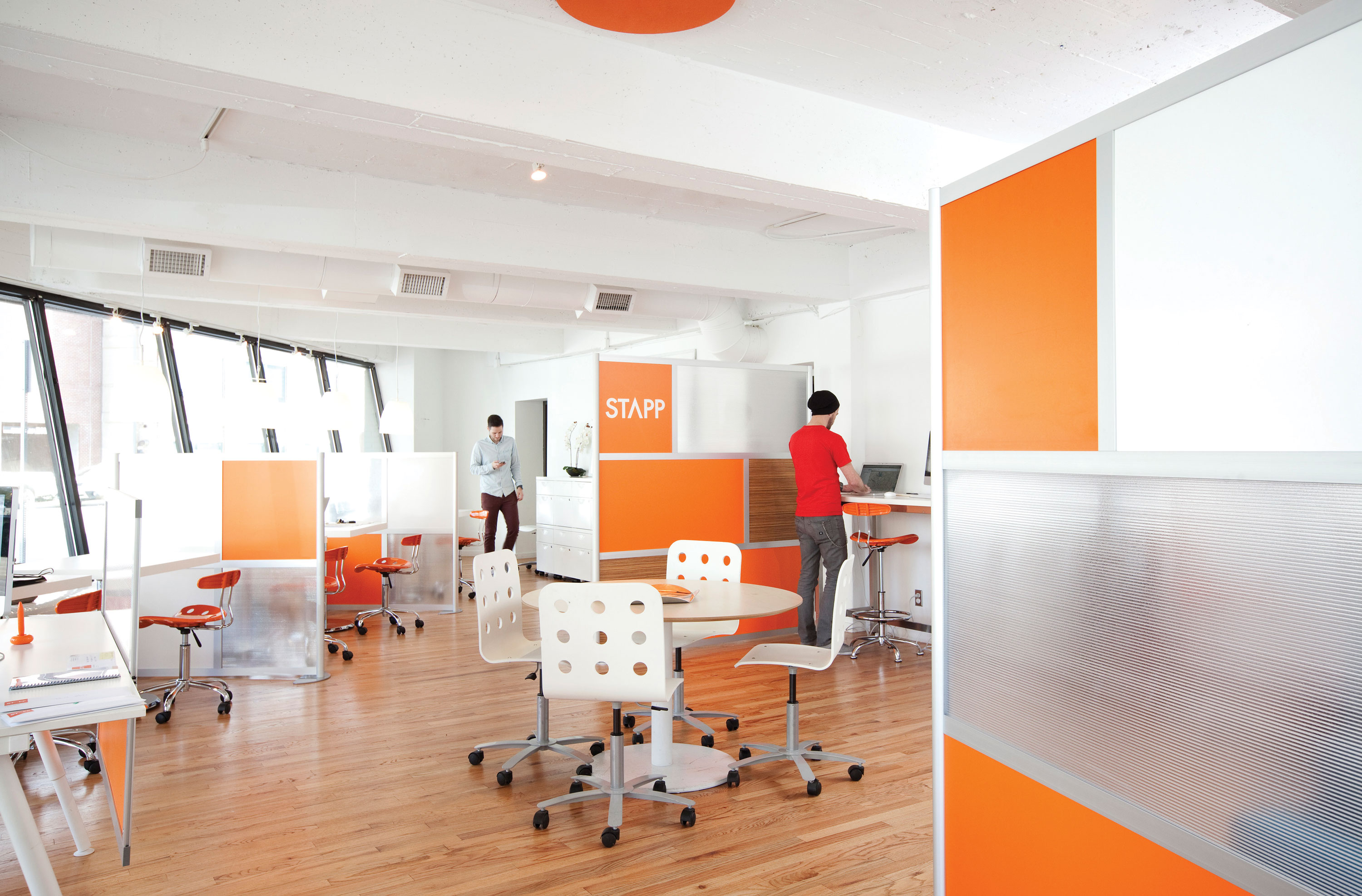
[Photo: Justin Clemons]

